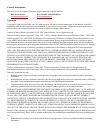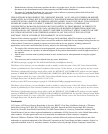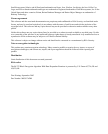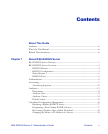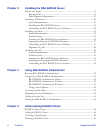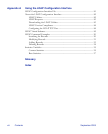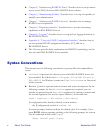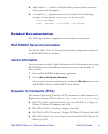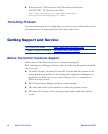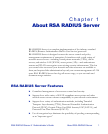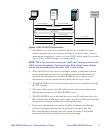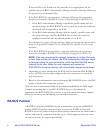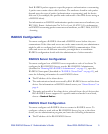x About This Guide September 2005
X Chapter 4, “Administering RADIUS Clients,” describes how to set up remote
access server (RAS) devices as RSA RADIUS Server clients.
X Chapter 5, “Administering Profiles,” describes how to set up user profiles to
simplify user administration.
X Chapter 7, “Administering RADIUS Servers,” describes how to manage
RADIUS server replication.
X Chapter 6, “Displaying Statistics,” describes how to use the monitoring
capabilities in RSA RADIUS Server.
X Chapter 8, “Logging,” describes how to set up and use logging functions in
RSA RADIUS Server.
X Appendix A, “Using the LDAP Configuration Interface,” describes how to
use the optional LDAP Configuration Interface (LCI) add-on to
RSA RADIUS Server.
X The Glossary provides brief explanations for RADIUS terminology used in
this and other RSA RADIUS Server manuals.
Syntax Conventions
This manual uses the following conventions to present file and command line
syntax.
X radiusdir represents the directory into which RSA RADIUS Server has
been installed. By default, this is
C:\Program Files\RSA Security\
RSA RADIUS
for Windows systems and /opt/rsa/radius on Linux and
Solaris systems.
X Brackets [ ] enclose optional items in format and syntax descriptions. In the
following example, the first
Attribute argument is required; you can
include an optional second
Attribute argument by entering a comma and
the second argument (but not the square brackets) on the same line.
<add | replace> = Attribute [,Attribute]
In configuration files, brackets identify section headers:
the [Configuration] section of
radius.ini
In screen prompts, brackets indicate the default value. For example, if you
press E
NTER without entering anything at the following prompt, the system
uses the indicated default value (
/opt).
Enter install path [/opt]:



